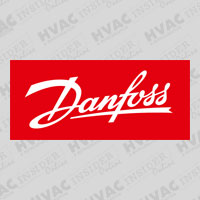
News
Danfoss and Penn State University Publish Report on Building Resilience and Sustainability
Danfoss published a report in January exploring the path to building resilience. The report, which was developed in conjunction with The Pennsylvania State University’s Architectural Engineering Department, explores the resilience challenge and its intersection with energy efficiency, in the context of an overarching demand for sustainability.
According to the report, the forms of the resilience challenge are potentially diverse—including climate change, disease pandemics, economic fluctuations, and terrorism. And communities, specifically urban areas that are expected to house nearly 70 percent of the earth’s population by 2050, were not designed to handle the impacts.
Traditionally, the built environment was designed to be fail-safe. But, the report asserts that, as catastrophic events become more intense and more frequent, fail-safe is no longer possible; infrastructure instead must be designed to be safe to fail—redefining infrastructure strategy to integrate elements of sustainability and a new conception of high-performance buildings.
Properly designed buildings and effective controls can help to maintain targeted building temperatures indefinitely—or for a very substantial period—despite protracted power outages. And digitalization linked to heating and cooling will be critical to optimize building energy consumption.
Scott Foster, director of the sustainable energy division of the United Nations Economic Commission for Europe, wrote in the report’s preface: “Resilience has now become integral to life quality within the built environment and is consequently an important element in the overall sustainable energy equation. It will be impossible to meet our global carbon goals or the targets of the 2030 Agenda without successfully addressing the resilience challenge, which is in its essence a dimension of the global sustainability crisis that now defines the international action agenda.”
Prioritizing and meeting the complex resilience challenge will require engagement from a variety of stakeholders, including local and national governments, which need to adopt policies to develop long-term climate and energy plans.
Dr. Sez Atamturktur, Dr. James Freihaut, and Dr. Gregory Pavlak of Penn State University’s Architectural Engineering Department contributed to the report.
The report is available for download at: http://bit.ly/DanfossBuildingResilience.
About Danfoss
Danfoss engineers advanced technologies that enable them to build a better, smarter and more efficient tomorrow. In the world’s growing cities, they ensure the supply of fresh food and optimal comfort in our homes and offices, while meeting the need for energy-efficient infrastructure, connected systems and integrated renewable energy.
Their solutions are used in areas such as refrigeration, air conditioning, heating, motor control and mobile machinery. Their innovative engineering dates back to 1933 and today Danfoss holds market-leading positions, employing 27,000 and serving customers in more than 100 countries. Danfoss is privately held by the founding family. Read more about Danfoss at www.danfoss.com.













